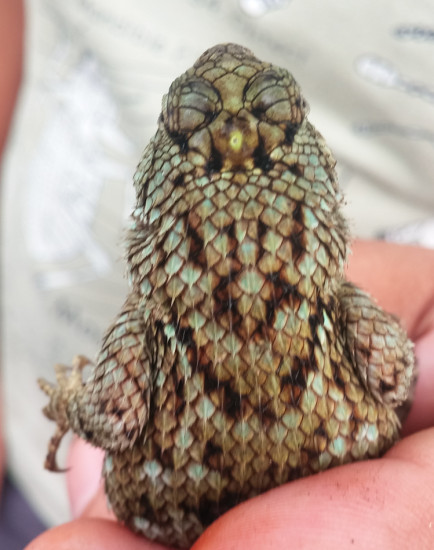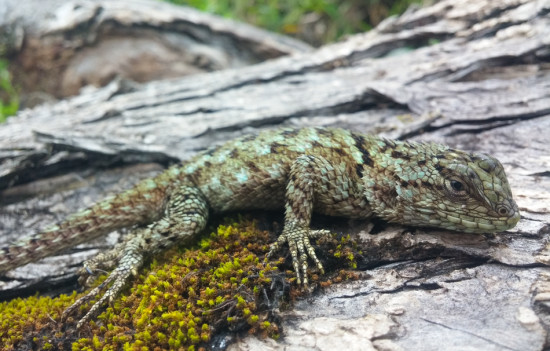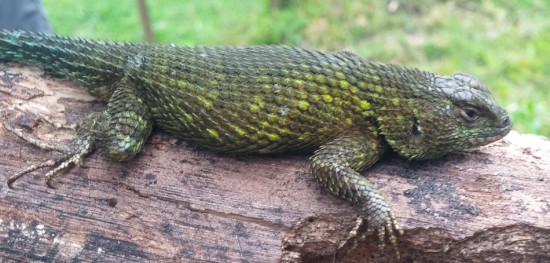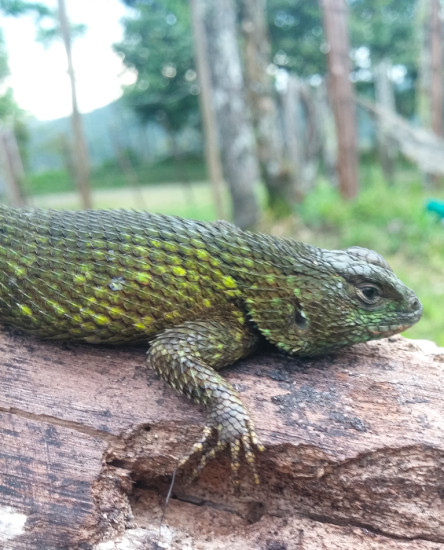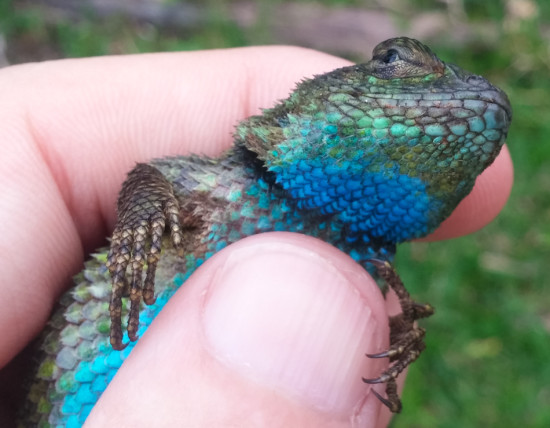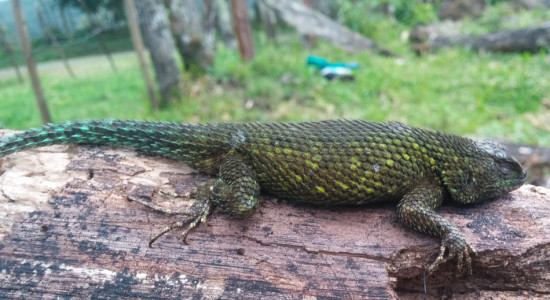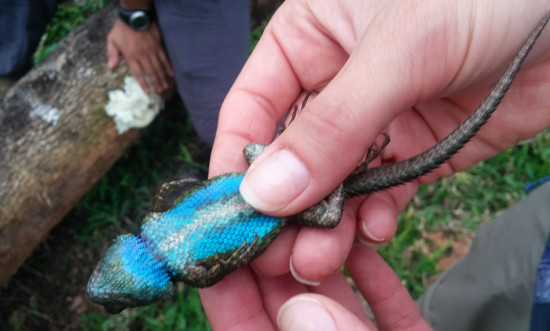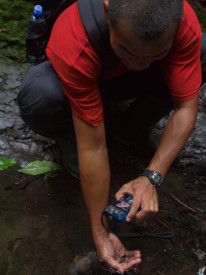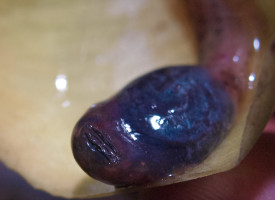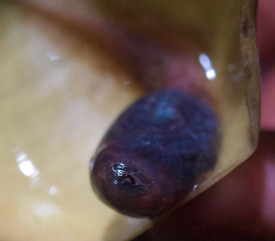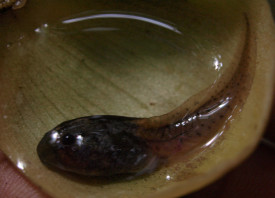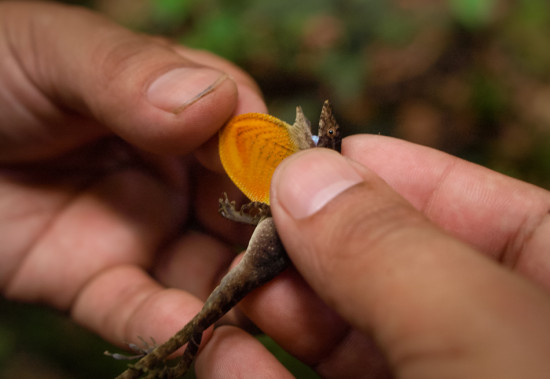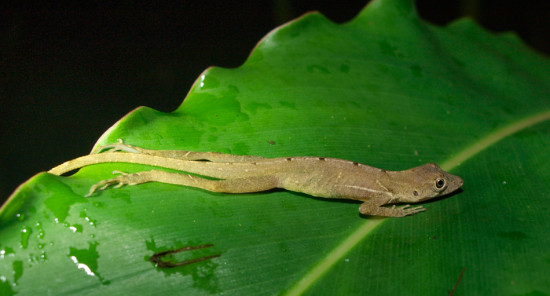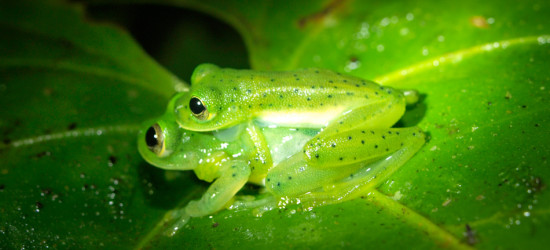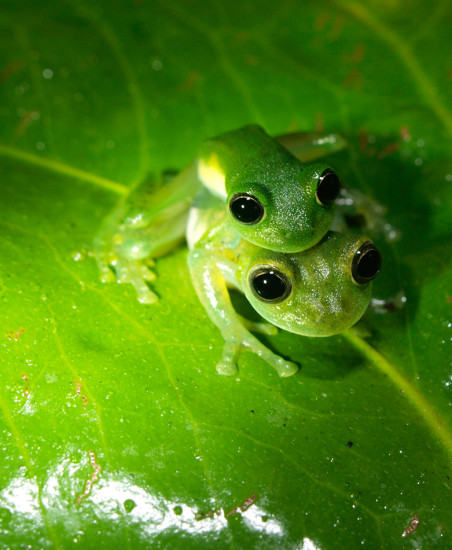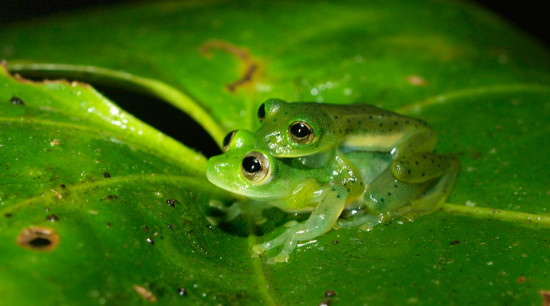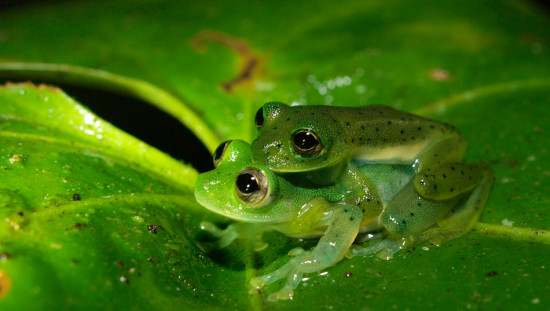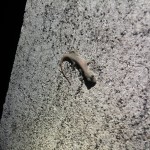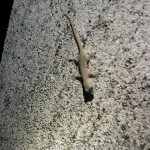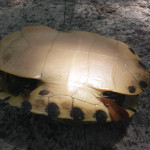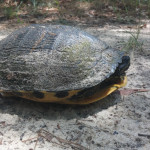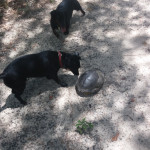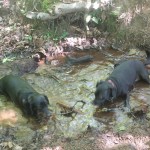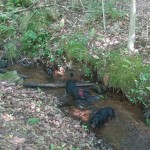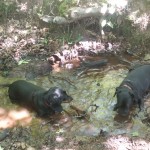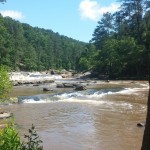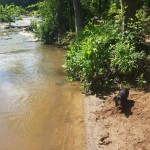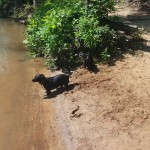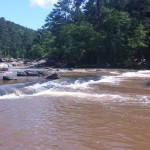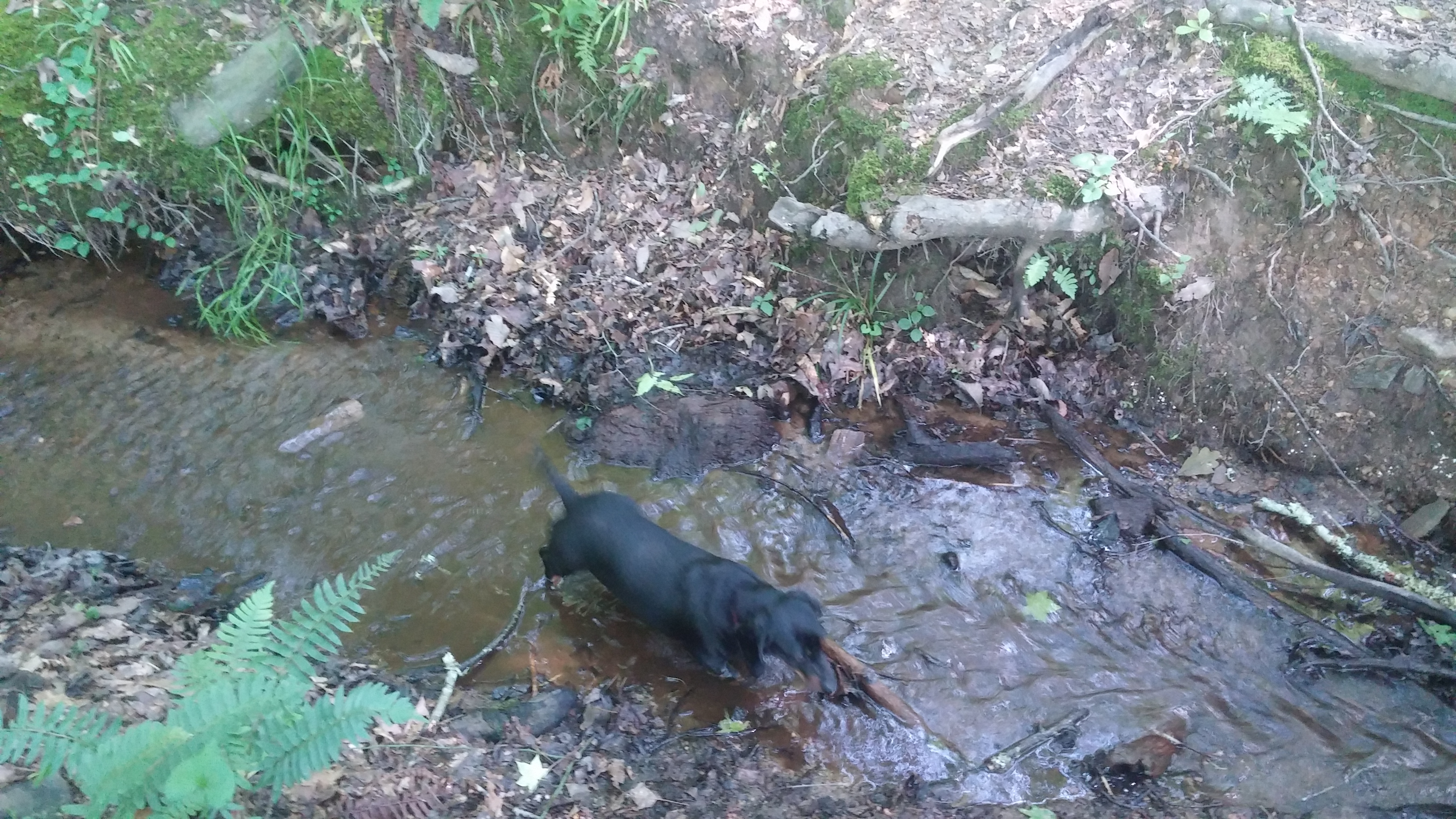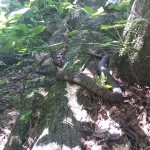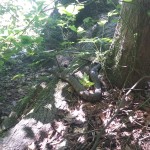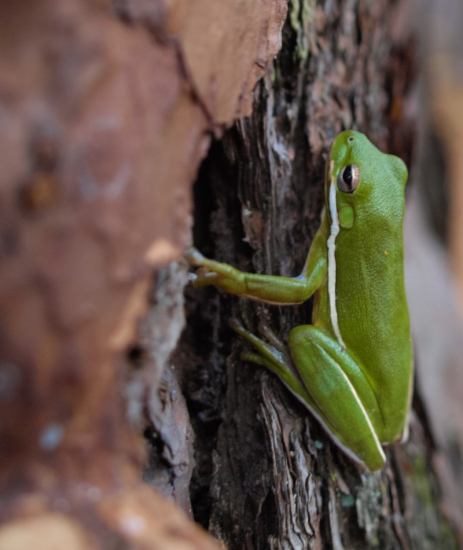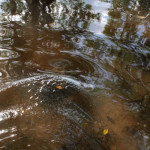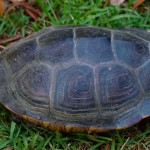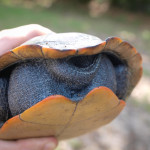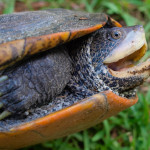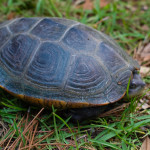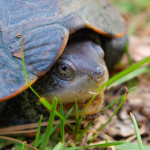Sceloporus malachiticus is common in open areas >1500 m in elevation in Costa Rica. They are fast and skittish, so these individuals were a team effort in their catch. While S. malachiticus is viviparous, giving birth to live, developed young, other Sceloporus species are oviparous, laying small eggs and burying them in the soil. It’s thought that vivipary is common in lizards living at high elevations because it allows the females to better thermoregulate their developing young-that is, a gravid female can move her internal young around in her environment to regulate their temperature.
Tag Archives: Herps
Tadpoles in Quebrada Cerro
A large tadpole from Quebrada Cerro in Las Cruces. This could be a tadpole of the brilliant forest frog (Lithobates warszewitshii), but I haven’t keyed it out.
Tadpoles were abundant in this stream, which drains primary wet forest, whereas they are fairly scarce in other streams in the preserve, possibly because fish didn’t appear to be present in Quebrada Cerro–in most other streams, fish, particularly the guppy, are abundant.
More ground anoles
Norops polylepis seen elsewhere on Montegraphia:
Emerald glass frogs in amplexis
Two pair of Emerald Glass Frogs (Centrolenidae: Centrolenella prosoblepon), in amplexis, readying themselves to release their gamates.
On some of the images, you can see a small blue-ish spike that is anterior to the male’s forelegs. This spike is diagnostic of the genus and is used by males to compete for mates.
Baby Hemidactylus
Hemidactylus frenatus
Yellow-bellied Slider
A large, female Trachemys scripta scripta.
A day at Sweetwater Creek State Park
The dogs rest in a cool stream and play in the Chattahoochee during our 5 mile hike at Sweetwater Creek State Park.
We came across a couple of hikers claiming a copperhead sighting—it’s a non-venomous watersnake (Nerodia sp.). I think some of the easiest ways to tell a water moccasin (cottonmouth) from a watersnake is (1) the heat-sensing pits between the eyes and nostrils and (2) the cat-like pupils. Certainly, the block-y, triangular head of viperids is distinctive too, but watersnakes tend to flatten themselves out when threatened, so their heads may appear triangular.
I’m not entirely confident in its species-level identification: there are several species of Nerodia in Georgia, including the Northern Watersnake (N. sipedon), the Brown Watersnake (N. taxispilota), the Banded Water Snake (N. fasciata), which occurs in Southern Georgia—Sweetwater Creek State Park doesn’t lie in the reported range of that species— and the Red-Bellied Water snake (N. erythrogaster), which is easily distinguished from other Nerodia by its solid, pinkish-red underside.
I’ve seen a lot of N. sipedon from Ohio and New York, and this individual struck me as appearing to have a small head. Reading the description of a ‘high eye close to the nostril’ at the Savannah River Ecology Laboratory, I’m apt to claim this is a Brown Watersnake (N. taxispilota), which is a new species for me. Sweetwater Creak State Park lies at about the range overlap of N. sipedon and N. taxispilota, which could dramatically complicate identification if hybridization occurs.
Unfortunately, I didn’t have anything but my cell phone camera, and it was big… so I didn’t catch it.
Green treefrog
Broadhead skink
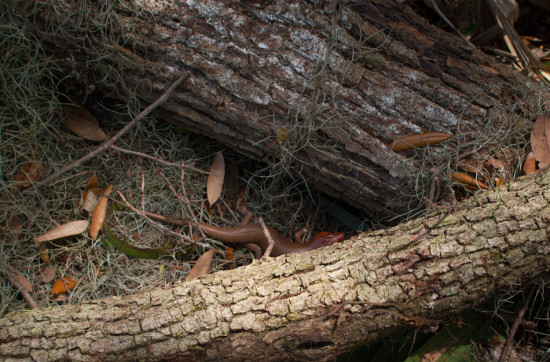 A broadhead skink Plestiodon laticeps that was a bit too fast for me. This specimen was fairly large, probably approaching the maximum in the normal size range for this species at about 30 cm in total length. I found this specimen at Skidaway.
A broadhead skink Plestiodon laticeps that was a bit too fast for me. This specimen was fairly large, probably approaching the maximum in the normal size range for this species at about 30 cm in total length. I found this specimen at Skidaway.
Diamondback Terrapin
I found a Diamondback terrapin, Malaclemys terrapin, outside of my apartment in May. Well… Amos really found her, but I made the catch and provided the identification.
She was likely gravid and was setting out to lay her eggs outside of the salt marsh adjacent to my apartment. While I prepared my camera, I placed her on the patio with Rocky, my Eastern Box Turtle, who promptly mounted the terrapin…

